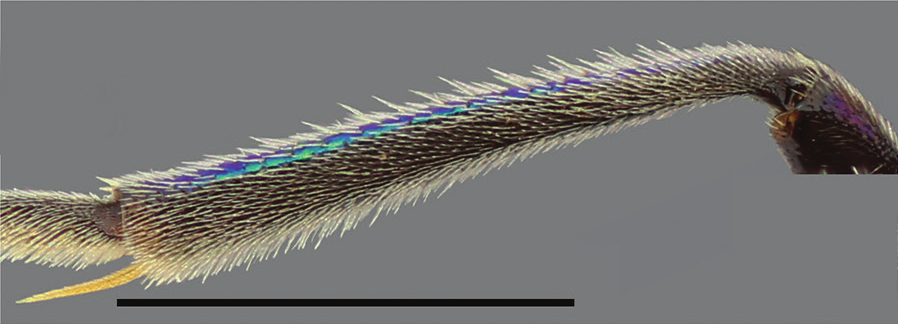Chrysis pulcherrima
- Innhold
- Diagnosis
- Distribution
- Biology
Diagnosis
Figure 165
Metatibia: Chrysis pulcherrima ♀. Scale 1 mm.
Length 6–8 mm.
The species resembles C. viridula by its colouration, but the head is dorsally partially red (not blue or green) in the female and occasionally also in the male. The mesosoma is dorsally red, as in C. viridula, but the mesoscutum is medially green or blue in the male. The setae medially on the metatibia are shorter than the width of the tibia (Fig. 165) (not longer, as in C. viridula).
Distribution
Denmark. Very rare. Only one female specimen is known from the island of Lolland (Strandby, 2.VIII.1919, leg. L. Jørgensen).
West Palearctic: southern Europe (Linsenmaier 1959).
Be aware that the records present in the GBIF map may be misleading for some countries due to unrevised data sets or missing information.
GBIF Taxon: Chrysis pulcherrima Lepeletier, 1806Biology
Habitat: sparsely vegetated sandy areas. Flowers of Apiaceae are occasionally visited by adults (Mingo 1994, Rosa 2004).
Flight period: June to August.
Host: unknown. According to Linsenmaier (1959), one female (of ssp. similitudina Linsenmaier, 1959) was found in a colony of Cerceris rubida (Jurine) (Crabronidae).
